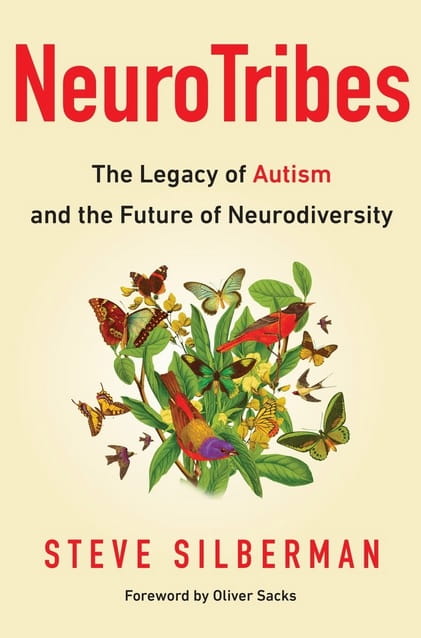 IN the introduction to his book NeuroTribes, science writer Steve Silberman admits that prior to embarking on his research: “Everything I knew about autism I had learned from Rain Man, the 1988 film in which Dustin Hoffman played a Savant named Raymond Babbitt who could memorize phonebooks and count toothpicks at a glance.”
IN the introduction to his book NeuroTribes, science writer Steve Silberman admits that prior to embarking on his research: “Everything I knew about autism I had learned from Rain Man, the 1988 film in which Dustin Hoffman played a Savant named Raymond Babbitt who could memorize phonebooks and count toothpicks at a glance.”
The genesis of the book – which has won the 2015 Samuel Johnson Prize for Non-Fiction – was an assignment to cover a “Geek Cruise” for Wired magazine, in which Silberman spent a week sailing up the Alaskan coast with a group of top software coders or “digital natives with their own history, rituals, ethics, forms of play, and oral lore”.
In the course of writing the article he encountered a curious phenomenon – an apparent “epidemic” of autism among children in Silicon Valley near San Francisco, the so-called cradle of the information technology industry. It had become cliché to joke that many of the programmers and engineers working at companies like Adobe or Intel were “on the spectrum”. Indeed one supervisor at Microsoft told Silberman: “All my top debuggers have Asperger syndrome.”
Was there a connection between these observations and the higher incidence of autism among children in the Valley?
This question is the starting point for a fascinating and amazingly comprehensive overview of more than 70 years of autism research starting in the early 1940s when the syndrome was “first” identified serendipitously by two doctors on opposite sides of the Atlantic: Leo Kanner and Hans Asperger.
The book also explores the desperate and heroic efforts of frustrated parents of autistic children looking for cures or simply the means to manage a debilitating condition among a morass of confusing research findings and often dubious theorising.
A central and recurring theme in the book is the notion that autism need not be regarded as a condition to be cured but as a naturally occurring “cognitive variation” with “distinctive strengths that have contributed to the evolution of technology”. Surveying the history of science Silberman considers numerous examples of individuals who today would no doubt be diagnosed with Asperger syndrome, including the eccentric English physicist Henry Cavendish, who in 1797 used an ingenious apparatus of rods and lead balls to determine the mass of the Earth.
At the book’s core is the idea that, given the right circumstances and support, many people “on the spectrum” can live happy, productive lives.
This page was correct at the time of publication. Any guidance is intended as general guidance for members only. If you are a member and need specific advice relating to your own circumstances, please contact one of our advisers.
Read more from this issue of FYi

Save this article
Save this article to a list of favourite articles which members can access in their account.
Save to library
